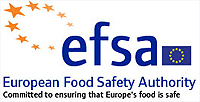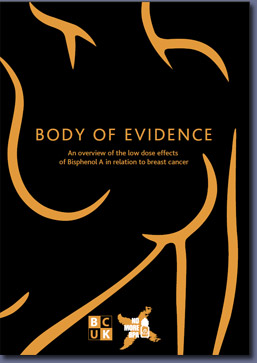Following a major study by the European Food Safety Agency
(EFSA) their scientific experts have provisionally concluded that for all population groups diet is the major source of exposure to bisphenol A (BPA) and exposure is lower than previously estimated by EFSA.
Unionsafety has previously reported on this major carcinogen and about concerns for the health of both adults and particularly babies across the world as a result of contamination and intake into the human body via certain routes of exposure.
See: Just What Are You Actually Drinking, And Feeding Your Baby?
BPA is a chemical compound used in food contact materials such as packaging as well as in other consumer products. This is the Authority’s first review of exposure to BPA since 2006 and the first to cover both dietary and non-dietary sources (including thermal paper and environmental sources such as air and dust).
 In February 2012, following further consideration of new scientific studies, the CEF Panel decided to undertake a full re-evaluation of the human risks associated with exposure to BPA through the diet, also taking into consideration the contribution of non-dietary sources to the overall exposure to BPA.
In February 2012, following further consideration of new scientific studies, the CEF Panel decided to undertake a full re-evaluation of the human risks associated with exposure to BPA through the diet, also taking into consideration the contribution of non-dietary sources to the overall exposure to BPA.
For this purpose all the available data and scientific studies on occurrence data of BPA in food and non-food sources published since EFSA’s 2006 Opinion have been reviewed. Besides exposure, the Panel is carrying out a full assessment of the potential human health risks of BPA, including further evaluation of the possible relevance for human health of some BPA-related effects observed in test animals at low dose levels.
As part of a two-stage process of its full risk assessment, EFSA is now seeking feedback on this draft assessment of consumer exposure to BPA. During a later phase, EFSA will publicly consult on the second part of its draft opinion, focusing on its assessment of the potential human health risks of BPA.
New data resulting from an EFSA call for data led to a considerable refinement of exposure estimates compared to 2006.
For infants and toddlers (aged 6 months-3 years) average exposure from the diet is estimated to amount to 375 nanograms per kilogram of body weight per day (ng/kg bw/day) whereas for the population above 18 years of age (including women of child-bearing age) the figure is up to 132 ng/kg bw/day.
 By comparison, these estimates are less than 1% of the current Tolerable Daily Intake (TDI) for BPA (0.05 milligrams/kg bw/day) established by EFSA in 2006.
By comparison, these estimates are less than 1% of the current Tolerable Daily Intake (TDI) for BPA (0.05 milligrams/kg bw/day) established by EFSA in 2006.
For all population groups above three years of age thermal paper was the second most important source of BPA after the diet (potentially accounting for up to 15% of total exposure in some population groups).
Among other key findings, scientists found dietary exposure to BPA to be the highest among children aged three to ten (explainable by their higher food consumption on a body weight basis). Canned food and non-canned meat and meat products were identified as major contributors to dietary BPA exposure for all age groups.
However, many will argue that ANY exposure is UNSAFE, and further the cocktail of chemicals found in human tissues today and its 'cocktail effect' is an unknown quantity and is never discussed in relation to the statements of 'safe daily consumption' rates!
In order to
determine these exposure estimates, experts on EFSA’s Scientific Panel on Food Contact Materials, Enzymes, Flavourings and Processing Aids (CEF Panel) applied two approaches: exposure modelling and analysis of human biomonitoring data (from urine samples).
- Exposure modelling involves the assessment of exposure to BPA through food and non-food sources (thermal paper, air, dust, toys, cosmetics, dental sealants) and routes (diet, inhalation and skin contact) in the EU population. This method allows for the estimation of exposure from all sources which could be identified and quantified individually.
- Urinary biomonitoring data (that is, levels of BPA found in the urine) were used to corroborate the Panel’s estimates of overall BPA exposure and to ensure no major source of exposure was missed.
The Panel’s draft opinion includes analysis of possible uncertainties in the exposure assessment.
The estimates of dietary exposure based on the data on occurrence of BPA in food and EFSA’s Comprehensive European Food Consumption Database are considered robust. However, there are uncertainties regarding exposure from thermal paper and more data are needed especially related to BPA skin absorption and cash receipt handling habits in order to provide a refined estimate of exposure through this source.
The EFSA are holding a consultation exercise and all stakeholders and interested parties will be able to provide their comments on the draft exposure assessment from 25 July to 15 September 2013.
EFSA decided on a two-stage public consultation in the interests of transparency and in line with the Authority’s willingness to consult with all stakeholders before conclusion of its full risk assessment.
You can take part here: Public consultation on the draft opinion on bisphenol A (BPA) – exposure assessment
Source: European Food Safety Agency
See also: Just What Are You Actually Drinking, And Feeding Your Baby?



